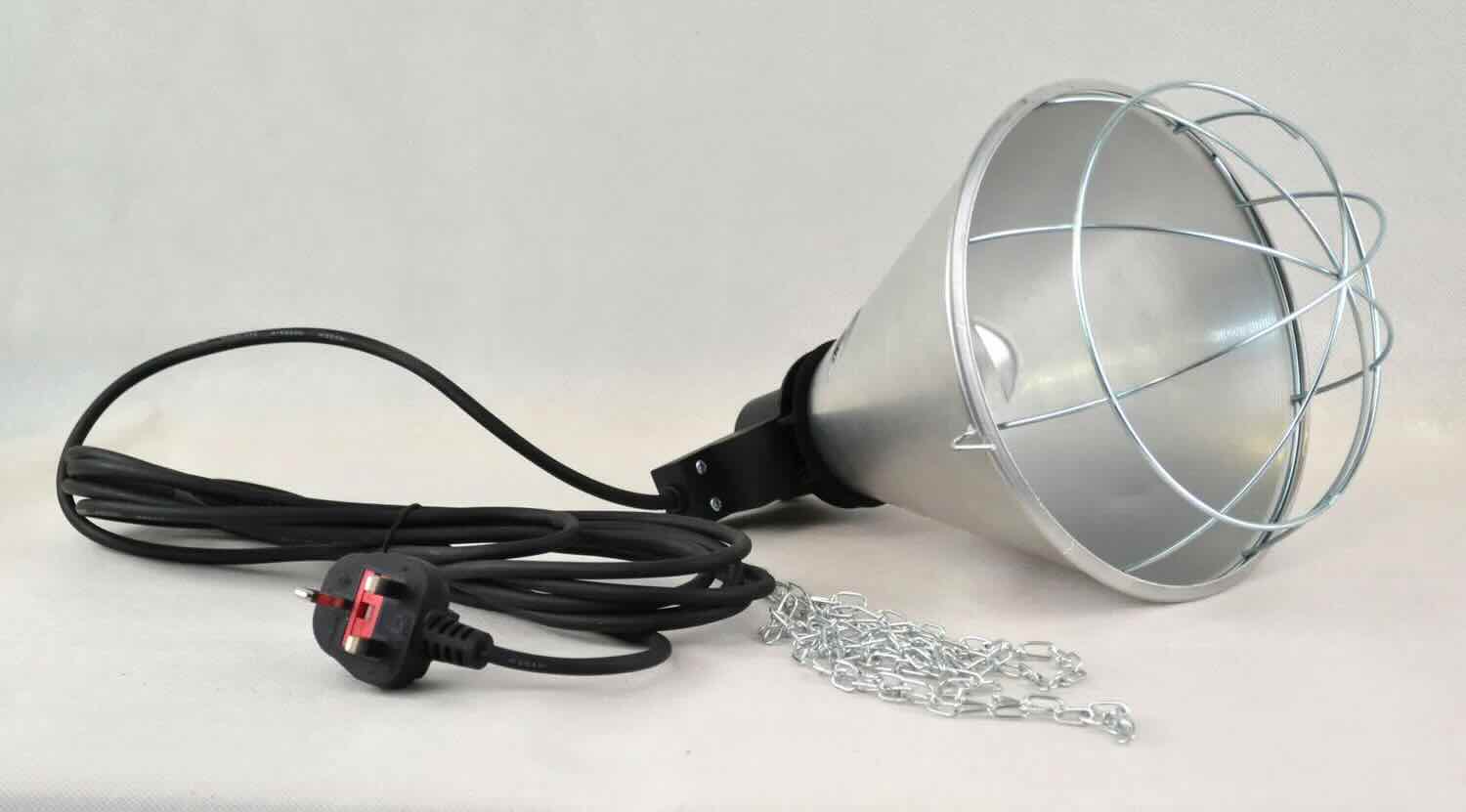

Furniture
Can You Leave Clothes In Dresser When Moving
Modified: February 25, 2024
Learn if it's safe to leave clothes in a dresser when moving. Get expert tips on packing furniture and keeping your belongings secure during the move.
(Many of the links in this article redirect to a specific reviewed product. Your purchase of these products through affiliate links helps to generate commission for Storables.com, at no extra cost. Learn more)
Introduction
Moving to a new home can be a both exciting and daunting experience. Whether you are relocating to a new city or just downsizing to a smaller place, packing and moving your belongings requires careful planning and organization. One common question that often arises during the moving process is whether it is safe and practical to leave clothes in a dresser. In this article, we will explore the importance of packing clothes properly, factors to consider when deciding whether to leave clothes in a dresser, and the pros and cons of this approach.
When it comes to moving clothes, it is essential to handle them with care to ensure they arrive at your new home in good condition. Properly packing and protecting your clothes will not only prevent wrinkles and damage but also make unpacking a breeze. The last thing you want is to open a dresser drawer at your new place only to find a jumbled mess of tangled clothes.
Before you make the decision to leave clothes in a dresser, there are a few factors you need to consider. First and foremost, you should assess the quality and sturdiness of your dresser. If the dresser is flimsy or in poor condition, it may not withstand the rigors of a move, potentially leading to damage to both the dresser and your clothes.
Key Takeaways:
- Properly packing clothes for a move is crucial to prevent damage, wrinkles, and disorganization. Consider the dresser’s condition, move distance, and clothing type before deciding whether to leave clothes in it.
- Leaving clothes in a dresser can save time and reduce the need for extra packing materials, but it comes with risks. Follow best practices and consider alternative packing options for a smooth and safe move.
Read more: Do You Have To Leave Curtains When You Move
Importance of Packing Clothes Properly
Properly packing your clothes is crucial when it comes to moving. Not only does it help protect your garments from getting damaged or wrinkled, but it also saves you time and stress when it’s time to unpack in your new home. Here are a few reasons why packing clothes properly is so important:
- Preventing Damage: By packing your clothes correctly, you can minimize the risk of damage during transportation. Clothing items that are not properly protected can get snagged, torn, or stretched out, especially if they are packed in a haphazard manner. To avoid this, take the time to fold or roll your clothes neatly and pack them in sturdy boxes or suitcases that provide adequate protection.
- Avoiding Wrinkles: Nobody wants to spend hours ironing or steaming clothes after a move. When packed properly, your clothes are less likely to get creased or wrinkled. Consider using tissue paper, garment bags, or packing cubes to keep your clothes organized and prevent them from getting crumpled during the moving process.
- Easy Unpacking: Properly organized and labeled boxes or suitcases make unpacking a breeze. Imagine being able to locate your favorite sweater or pair of jeans without rummaging through piles of clothes. By packing your clothes systematically and labeling the containers, you’ll save time and frustration when it’s time to unpack. Plus, you’ll have a better idea of the contents of each box, making it easier to prioritize what to unpack first.
- Maximizing Space: Efficiently packing your clothes allows you to make the most of the available space during your move. By using techniques such as rolling your clothes instead of folding them or utilizing vacuum-sealed bags, you can save valuable space in your moving truck or storage unit. This can be particularly beneficial if you are moving a large quantity of clothes or have limited space.
Remember, the way you pack your clothes will largely determine their condition upon arrival at your new home. So take the time to pack them properly, and you’ll thank yourself later.
Factors to Consider When Deciding Whether to Leave Clothes in a Dresser
Deciding whether to leave clothes in a dresser during a move requires careful consideration. While it may seem convenient to simply leave them where they are, there are several factors you should keep in mind. Here are some key considerations to help you make an informed decision:
- Dresser Condition: Start by assessing the condition of your dresser. Is it sturdy and in good shape? Consider the quality of the materials, the structural integrity, and any known issues such as loose joints or cracked drawers. If your dresser is old, fragile, or in poor condition, it may not withstand the bumps and jolts of the moving process, potentially resulting in damage to both the dresser and your clothes.
- Distance of the Move: The distance of your move is also an important factor to consider. If you’re moving locally and the dresser will be carefully loaded and unloaded, leaving clothes in the dresser might be a viable option. However, for long-distance moves or moves involving multiple transfers, the dresser may be subject to more handling and jostling, increasing the risk of damage to the clothes inside.
- Type of Clothing: Think about the type of clothing you have in the dresser. Delicate items such as evening gowns, suits, or special occasion attire may require extra care and protection during the move. If you have valuable or irreplaceable garments, it may be safer to pack them separately in garment bags or specialty boxes to ensure their protection.
- Weight of the Dresser: Consider the weight of the dresser when deciding whether to leave clothes in it. Dressers can be heavy to lift, especially when filled with clothes. If the weight exceeds the recommended limit set by professional movers or if it poses a risk to the movers or to the structure of the dresser itself, it’s best to remove the clothes before transporting the dresser.
- Time Constraints and Convenience: Leaving clothes in a dresser can be a time-saving and convenient option, especially if you’re short on time. If you’re moving on a tight schedule and need to quickly pack up your belongings, leaving the clothes in the dresser can save you the hassle of individually packing each item. However, keep in mind that if the dresser needs to be disassembled and reassembled, the clothes may need to be removed anyway, adding extra steps to the moving process.
Ultimately, the decision to leave clothes in a dresser when moving depends on these factors and your own personal circumstances. Take the time to evaluate each consideration and weigh the pros and cons before making your final decision.
Pros of Leaving Clothes in a Dresser During a Move
Leaving clothes in a dresser during a move can offer several advantages. While it may not be the best choice for every situation, there are circumstances where this approach can be practical and beneficial. Here are some of the pros of leaving clothes in a dresser:
- Time-Saving: One of the primary advantages of leaving clothes in a dresser is the time saved during the packing process. Instead of individually folding and packing each clothing item, you can simply leave them in the dresser drawers and secure them for transport. This can be particularly useful if you have limited time or a large number of clothes to pack.
- Less Need for Additional Packing Materials: When clothes are left in a dresser, there is no need for additional packing materials such as boxes, bubble wrap, or packing paper for those specific items. This can help reduce the amount of packing supplies needed for your move, resulting in potential cost savings and a more eco-friendly approach.
- Reduced Risk of Damage: If your dresser is sturdy and well-constructed, leaving clothes inside can provide added protection during the move. The dresser acts as a solid container, preventing clothes from shifting or becoming damaged due to external forces. This can be especially beneficial for shorter-distance moves or if you have a reliable moving company with experienced movers.
- Organized and Convenient: Leaving clothes in a dresser can help maintain organization and ease of unpacking at your new home. Instead of rummaging through numerous boxes to find specific clothing items, you can simply pull out the drawers from the dresser and place them in their designated spots. This can save you time and effort in sorting and arranging your clothes after the move.
However, it is important to note that these pros come with certain caveats. The dresser should be in good condition, not overly heavy or unstable, and the move should be relatively short and secure. It’s crucial to assess these factors and determine if leaving clothes in the dresser aligns with your specific circumstances and moving needs.
Cons of Leaving Clothes in a Dresser During a Move
While leaving clothes in a dresser during a move can offer some advantages, there are also potential drawbacks to consider. It’s important to weigh these cons against the pros to make an informed decision. Here are some of the cons of leaving clothes in a dresser:
- Increased Risk of Damage: Despite a sturdy dresser, there is still a risk of damage to both the dresser and the clothes inside. The dresser may experience bumps, jolts, or even be mishandled during the moving process. This can result in damage such as drawer misalignment, broken handles, or even structural damage to the dresser. Additionally, clothes may shift within the drawers, causing wrinkles, creases, or tangled items.
- Weight and Maneuverability: Leaving clothes in a dresser can significantly increase its weight, making it more difficult to move. This can be problematic, especially if you are hiring professional movers or if you need to navigate narrow hallways, staircases, or tight spaces. It could increase the risk of injury to movers or damage to walls and doorways.
- Limited Access: Once the dresser is packed, accessing your clothes during the move becomes challenging. If there’s an item you need or want to change during the journey, you’ll have to unpack the entire dresser or rummage through the tightly packed drawers. This lack of accessibility can be inconvenient and frustrating, particularly if you’re on a long-distance move.
- Disassembly and Reassembly: If your move requires disassembling and reassembling the dresser, leaving clothes inside can complicate the process. You’ll need to remove the clothes before taking the dresser apart, which adds an extra step to the moving process. This can be time-consuming and may require additional packing materials to safely store the clothes while the dresser is disassembled.
- Unpredictable Conditions: It’s essential to consider the unpredictable conditions during a move. Factors like weather, road conditions, and accidents can lead to unexpected movement and shaking of the truck or vehicle. This can further increase the chances of the dresser and its contents getting damaged, especially if the clothes are not well-secured inside the drawers.
Considering these cons is important when deciding whether to leave clothes in a dresser during a move. Understanding the risks involved will help you make an informed decision to ensure the safety of your clothes and the preservation of your dresser.
It’s best to empty the dresser before moving to prevent damage to the furniture or the clothes. Moving with clothes inside can make the dresser heavier and more difficult to handle.
Read more: Do You Leave A Shower Curtain When Moving
Best Practices for Leaving Clothes in a Dresser When Moving
If you have decided to leave clothes in a dresser during your move, it’s important to follow some best practices to ensure the safety and organization of your garments. By taking these precautions, you can minimize the risk of damage and make the process as smooth as possible. Here are some best practices to consider:
- Clean and Declutter: Before packing, make sure to thoroughly clean your clothes. This will help prevent any dirt or stains from setting in during the move. It’s also a good opportunity to declutter and get rid of any items you no longer need or want, reducing the overall weight and bulk of your clothing collection.
- Secure Drawers: To prevent drawers from sliding open during transportation, secure them with tape, straps, or zip ties. This will help keep the clothes inside and minimize the risk of damage or disorganization. Avoid using tape directly on the dresser surface as it could leave sticky residue or damage the finish.
- Wrap Fragile Items: If you have delicate or fragile items such as accessories or keepsakes in the dresser, wrap them individually in tissue paper or bubble wrap to provide extra protection. This will help prevent any breakage or damage during the move.
- Protect from Moisture: Moisture can be a concern during transportation, especially if you’re moving long distances or through varying climates. To keep your clothes dry, consider using moisture-absorbing packets or placing a waterproof cover over the dresser to provide an extra layer of protection.
- Evaluate Dresser Weight: Take the weight of the dresser into consideration, especially if you’ll be moving it yourself or if there are weight restrictions. If the dresser becomes too heavy with clothes, you may need to remove some items to maintain a manageable weight or consider alternative packing options for the excess garments.
- Document and Label: Before packing, take photos or make a list of the clothes in each drawer. This will help you remember what you’ve packed and make unpacking easier. Additionally, label the drawers or dresser itself with a description like “clothes” or “bedroom” to ensure it’s placed in the appropriate room in your new home.
- Keep Important Items Separate: If you have valuable or sentimental items, consider packing them separately in a carry-on bag or a designated box. This will give you peace of mind knowing that these items are kept safe and away from the risks associated with moving.
Following these best practices will help you mitigate the potential risks of leaving clothes in a dresser during your move. By taking proper precautions and staying organized, you can ensure that your clothes arrive at your new home in good condition and are ready to be unpacked and enjoyed.
Alternative Packing Options for Clothes During a Move
While leaving clothes in a dresser can be a convenient option, it may not always be feasible or practical. In some cases, you may need to explore alternative packing options for your clothes to ensure their safety and ease of transportation. Here are some alternative methods for packing your clothes during a move:
- Cardboard Boxes: One of the most common and versatile packing options is using cardboard boxes. Invest in sturdy moving boxes of various sizes and pack your clothes according to their type, season, or wearer. Fold the clothes neatly and place them in the boxes, using packing paper or bubble wrap to provide cushioning and fill any empty spaces.
- Plastic Storage Bins: Plastic storage bins are a durable and waterproof option for packing clothes. They provide protection against moisture and can be stacked and sealed tightly. Label the bins to easily identify their contents and make unpacking more efficient. Plastic bins can also be reused for storage purposes after the move.
- Wardrobe Boxes: Wardrobe boxes are specifically designed for hanging clothes. These tall boxes come with a built-in hanging rod, allowing you to transfer your clothes directly from the closet to the box without removing them from their hangers. This option keeps your clothes wrinkle-free and makes unpacking a breeze as you can easily transfer them to your new closet.
- Vacuum-Sealed Bags: Vacuum-sealed bags are a great space-saving option, especially for bulky items like winter coats, blankets, or pillows. These bags remove excess air, reducing the overall volume of your clothing. However, keep in mind that vacuum-sealed bags may compress delicate fabrics or cause permanent wrinkles, so use them for items that can withstand the pressure.
- Garment Bags: For delicate or formal clothing items such as suits, dresses, or wedding gowns, garment bags provide optimal protection. These long bags have a built-in hanging feature to keep your clothes in their original shape and prevent wrinkles. Consider investing in heavy-duty garment bags with sturdy zippers for added durability.
- Packing Cubes: Packing cubes are small, lightweight containers that help you organize and compress your clothes. These fabric cubes come in various sizes and can be packed inside larger bags or suitcases. They are particularly useful for grouping items by category or outfit, making it easier to locate specific garments during and after the move.
Remember to label your packed containers to ensure easy identification and organized unpacking. Consider packing a “moving essentials” bag with a few days’ worth of clothes, toiletries, and personal items, so you have easy access to the essentials while settling into your new home.
By exploring these alternative packing options, you can find the best method to suit your specific needs and ensure the safe and efficient transportation of your clothes during the move.
Tips for Safely Transporting Clothes in a Dresser
If you’ve decided to leave clothes in a dresser during your move, it’s important to take certain precautions to ensure their safe transportation. By following these tips, you can minimize the risk of damage and ensure that your clothes arrive at your new home in good condition:
- Secure the Dresser Drawers: Before moving the dresser, make sure to secure the drawers using tape, straps, or zip ties. This will prevent the drawers from sliding open during transportation and keep your clothes neatly in place.
- Remove Fragile or Valuable Items: Take out any delicate or valuable items from the dresser and pack them separately. This will protect them from potential damage during the move. Consider wrapping them in tissue paper or bubble wrap and transporting them in a separate, secure container.
- Protect the Dresser Surface: To safeguard the surface of the dresser from scratches or scuffs, place a protective covering such as a blanket or sheet over it. Secure the covering with tape or straps to ensure it stays in place during the move.
- Check Weight Limits: Ensure that the weight of the dresser with the clothes inside does not exceed the weight limits recommended by professional movers or the manufacturer. If it does, you may need to remove some items and pack them separately to prevent strain on the dresser and potential damage.
- Lift with Care: When lifting and carrying the dresser, use proper lifting techniques and employ the help of others if needed. The combined weight of the dresser and clothes can make it heavy and cumbersome, so take precautions to avoid injury to yourself or damage to the dresser.
- Use Proper Equipment: If you’re moving the dresser yourself, make sure you have the appropriate equipment, such as furniture dollies or sliders, to help transport it safely. These tools can make it easier to maneuver the dresser, reducing the risk of damage to the dresser and your clothes.
- Drive Carefully: If you’re transporting the dresser in a vehicle, drive with caution and avoid sudden stops, starts, or sharp turns. Secure the dresser in the vehicle to prevent it from shifting or tipping over during the journey. This will help minimize the impact on the clothes inside.
- Unpack and Reorganize Promptly: Once you arrive at your new home, unpack and reorganize the clothes from the dresser as soon as possible. This will help prevent wrinkles and allow you to properly arrange your clothes in the new space.
By following these tips, you can ensure that your clothes and dresser are transported safely during the move. Taking the necessary precautions will help protect your garments and preserve the integrity of the dresser for years to come.
Conclusion
Moving can be a stressful and overwhelming process, but with proper planning and organization, you can ensure a smooth transition to your new home. When it comes to packing clothes, the decision of whether to leave them in a dresser requires careful consideration. While leaving clothes in a dresser can offer convenience and time-saving benefits, it’s important to assess the condition of the dresser, the distance of the move, and the type of clothing you have.
Throughout this article, we have explored the importance of packing clothes properly, the factors to consider when deciding whether to leave clothes in a dresser, as well as the pros and cons of this approach. We have also discussed alternative packing options for clothes and provided tips for safely transporting clothes in a dresser.
Ultimately, the decision to leave clothes in a dresser or pack them separately depends on your specific circumstances and preferences. It’s crucial to prioritize the safety and protection of your clothes, while also considering practicality and convenience.
Remember, regardless of the method you choose, proper packing techniques and organization are key. Take the time to fold or roll clothes neatly, use appropriate packing materials, and label your containers for easy identification during unpacking. This will not only help protect your clothes but also make the unpacking process much smoother.
By making informed decisions and following best practices, you can ensure that your clothes arrive in good condition and are ready to be enjoyed in your new home. So whether you decide to leave clothes in a dresser or opt for alternative packing options, approach the task with care, and embrace the excitement of starting fresh in your new space.
Frequently Asked Questions about Can You Leave Clothes In Dresser When Moving
Was this page helpful?
At Storables.com, we guarantee accurate and reliable information. Our content, validated by Expert Board Contributors, is crafted following stringent Editorial Policies. We're committed to providing you with well-researched, expert-backed insights for all your informational needs.















0 thoughts on “Can You Leave Clothes In Dresser When Moving”